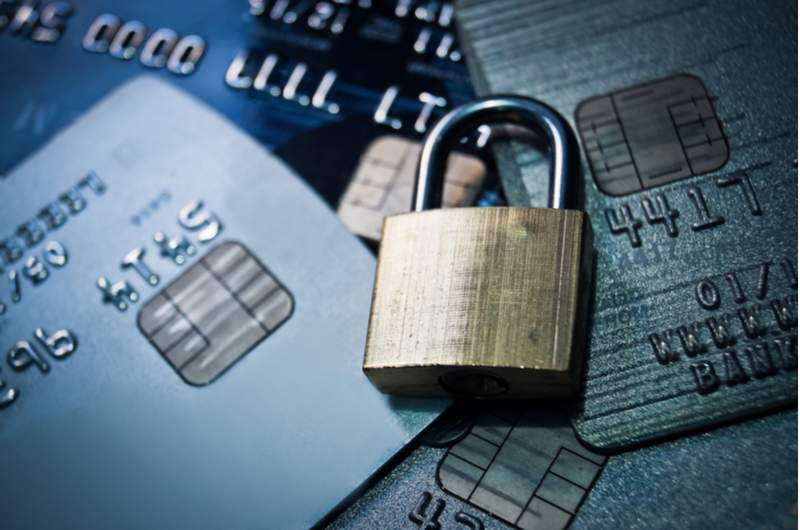Identity theft occurs when a thief steals your personal information and impersonates you for personal gain. Identity theft has always been an issue, but it has seen a resurgence in recent years thanks to many new online identity theft scams. A 2020 study by Javelin Strategy and Research showed roughly 1 in 20 individuals were victims of identity fraud. Not only are cases more common, but victims are reporting greater losses as well.
There are many steps you can take to protect your identity. Identity theft itself is hard to outright stop. Scammers are always coming up with new techniques to get your personal information. However, there are some services and precautions which make it much easier to detect potential fraud and reverse the effects before it causes financial damage.

Utilize Free Credit Reports
While some of the most well-known identity theft scams focus on stealing your personal information and making a series of large purchases, some scams are more subtle and occur over a long period of time. One of the ways you can catch both long- and short-term scams is by regularly checking your credit score. When you are a victim of identity theft, your credit score commonly takes a hit due to a sudden influx of purchases or the scammer opening accounts in your name.
Credit reports let you see a list of all your credit card accounts and whether your score has significantly dropped from large, unpaid purchases. Typically, you must pay for a credit report, but every year, you are allowed a free credit check from the three major bureaus. As of writing, these include Equifax, Experian and TransUnion. Other bureaus may offer free checks as well, with many offering limited deals because of Covid-19. Select credit cards may also include credit checks as one of the benefits.
Automatic credit monitoring is available as well, but you must pay for this service. This is one of the quickest ways to catch identity theft, alerting you the moment a suspicious purchase or account is created in your name. These services often provide extra protection, such as general bank account monitoring, dark web scans to see if your identity is being sold and providing anti-phishing tools. Some services also place an automatic freeze on your account after an influx of suspicious purchases.
Keep up with Mail
While many identity thieves shifted to online scams, there are still many scammers getting personal information through the mail. Because so much information is exchanged digitally, there are many individuals who do not stay on top of getting the mail. There are many pieces of mail containing information an identity thief can use to steal your personal information. The most obvious are utility bills and healthcare documents. A less obvious piece of mail scammers use is pre-paid credit offers. For many, these offers are considered junk mail, but in the hands of the scammer, it is an easy way to impersonate you and create a new account in your name.
If you know you cannot actively check your mail, there are two viable alternatives. One is to get all your mail delivered to a Post Office box, which only you have access to. The other option is to get a USPS approved locked mailbox. A potential third option is asking a trusted friend or neighbor to retrieve your mail for you. This primarily works if you are away for a limited time, such as going on vacation. Otherwise, it may put too much of a burden on your friend or neighbor.
Going Paperless
If you are unable to secure your mailbox, the next best thing is removing what compromising information is sent through the mail. Many services offer paperless billing, allowing you to pay for utilities and loans digitally. Digital statements are also easier to keep track of, since your emails automatically store the information for you. Many individuals also find it easier to track bills and make payments digitally instead of relying on the mail.
If you still receive mail or have other paper documents with your information, make sure you properly dispose of them. Instead of throwing the documents away, run them through a paper shredder, so an identity thief cannot steal the forms before your garbage is collected.
Password Protection
With an increase in digital identity theft, it is important to protect your computers, phone and tablets. Smartphones are a popular target because many apps automatically store your login information, allowing scammers to easily access it. Having a strong password is a must. Whenever possible, consider two factor authentication as well. With two factor authentication, you input your username and password as normal. Instead of logging straight into your account, you must submit a second password. In many cases, this is a randomly generated password, which is sent to you via email or text. Other devices, typically smartphones and tablets, may require you to scan your fingerprint.
Software Updates
In addition to using a strong password system, you can also prevent identity theft by staying up to date with software updates. Most software automatically updates, but some require you to manually perform the update, or only update after you reset your device. Most software updates include patches to prevent security flaws. Delaying updates leaves you vulnerable, making you a target for online identity thieves.